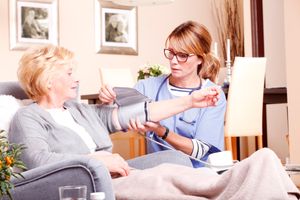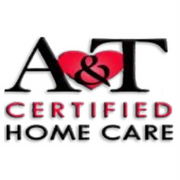An Introduction to Senior Rehabilitation

When an older loved one is hospitalized with an illness, injury, or condition, it is important that you plan the best next steps for their recovery after they leave the hospital. While the end goal is the same—the fullest recovery possible—the environment and treatment methods for this process can vary significantly from patient to patient. Below is a breakdown of the details you need to know when putting a loved one through senior rehabilitation.
Types of Rehabilitation
Physical Therapy
This treatment handles any pain or weakness that impairs a patient’s mobility. Physical therapists will create a regimen that relieves pain, increases mobility, and helps get seniors back to normal life unassisted. This treatment can also be used to increase muscle strength and promote balance to prevent future injuries.
Occupational Therapy
As opposed to building back strength, occupational therapy focuses on improving fine motor skills, strength, and dexterity to help a patient involve themselves back in daily life. Occupational therapists focus on what a patient can do after an injury, illness, or condition and help them relearn important life skills needed for everyday activities.
Speech and Language Therapy
Patients who have suffered a stroke or head injury, or they have dementia will undergo extensive speech and language therapy. For seniors, in particular, this therapy is vital for future emergency situations, where they need to communicate what is wrong. Speech-language pathologists treat patients who have trouble speaking due to mental impairments as well as physical impairments, such as weakened vocal folds and larynx muscles due to age. Once they determine the root of the problem, they create a treatment strategy to treat it.
Outpatient vs Inpatient
Outpatient Rehabilitation
A patient undergoes treatment to a patient a few times a week. They must be transported to the senior rehabilitation center from their home, and they are responsible for doing exercises at home to continue their progress. The major perk of outpatient senior rehabilitation is that patients are allowed to remain in the comfort of their own home, but they will have to depend on other people for getting to their treatment and will need to have the initiative to work on their own to progress their recovery.
Inpatient Rehabilitation
Patients who aren’t ready to go home after they are hospitalized for major illness, injury, or surgery will instead live at a facility during their recovery. While they aren’t home yet, patients see substantial progress when admitted to an inpatient rehabilitation center because therapy treatment occurs daily, and recovery tactics are more intensive. Loved ones of the patient also don’t have to worry about their transportation and general care, and these facilities can be housed within retirement communities, offering a supportive environment conducive to recovery.
Living Arrangements

Skilled Nursing Facilities
Also known as rehab hospitals or nursing homes, these centers for patients who need constant medical care. A patient’s experience will be similar to a hospital, with 24-hour nurses and a standard hospital bed in their room. This option is best suited for a loved one that is confined to their bed and needs an on-call nurse at all times. Short-term stays in skilled nursing facilities are covered by Medicaid for up to 100 days, but in order to qualify for coverage, the stay must begin within 30 days of a hospital stay that lasted more than three days.
Assisted Living
An option included in many retirement communities, assisted living will usually have the equipment and facilities to care for a patient’s recovery. This option is best for a patient that isn’t quite ready to live at home but doesn’t need constant nurse supervision to recover. An assisted living home can allow for a home health aide to visit and help your loved one with medication and basic welfare tasks like bathing, dressing, and meal prep. Meanwhile, the community’s staff will be on-call 24 hours a day should they need it. A patient can stay at assisted living temporarily or opt to live there permanently—the living situation is similar to an apartment or small condo that allows them to furnish and decorate it themselves. Seniors often prefer this option for recovery because it’s less restrictive than a nursing home environment, but it has a community feel they wouldn’t get as easily at home.
At-Home Care
This living arrangement is the least-restrictive option for rehabilitation, but it requires a considerable amount of outside assistance in order for a patient’s recovery to be effective. Seniors will need a home health aide to administer medicine and help with basic tasks throughout the week. They will need therapists to either come to them, or they will need a loved one to drive them to their appointments. In order to have social support, their friends and family will need to regularly visit while they recuperate. At-home care is best suited for a patient who doesn’t live alone, which assures that they don’t become lonely and that they have assistance in case of an emergency.
Home Health Care vs Home Care
Home Health Care
This type of care involves hiring a nurse to tend to wounds, administer medications and health tests, provide therapy, and generally monitor a patient’s health. Their care is covered by Medicaid.
Home Care
Seniors who are not able to care for themselves need assistance bathing, getting dressed, making meals, remembering to take medication (but not necessarily need help administering it), and tending to their home. That is where home care comes in. Patients often live alone and cannot drive, and a caretaker often serves as reliable companionship and transportation. Medicaid usually doesn’t cover this type of care, but long-term care insurance will.
If your loved one has suffered a major illness or injury, it is important to plan for their recovery after their hospital visit is over. Residents of New City, New York turn to A&T Certified Home Care for the best at-home assistance and senior rehabilitation for their loved ones. Their caregivers offer skilled elder care services at a live-in or hourly basis, providing help with everyday needs of the individual. Visit their website or call their team today at (845) 708-8182 to learn more about their services.
About the Business
Have a question? Ask the experts!
Send your question

